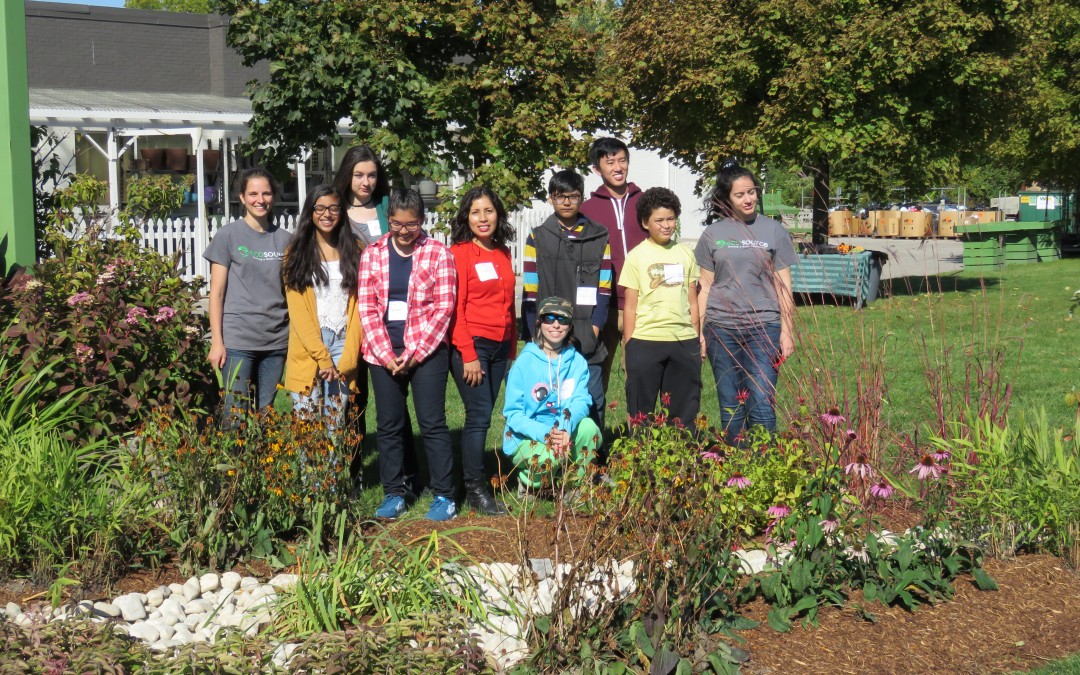Image: Ecosource volunteers at a planting event
By Anastasia Kaschenko and Clara Blakelock
Health benefits offer a powerful driver for increasing the implementation of green infrastructure in our cities. While stormwater is top of mind for most green infrastructure practitioners, its impact on people can often be overlooked. Here are some human problems that green infrastructure can help to solve:
Air pollution
Each year, tens of thousands of Canadians die prematurely due to air pollution. By increasing vegetation in dense urban areas, especially along roadways or parking areas close to vehicle emissions, green infrastructure can significantly improve urban air quality.
Urban heat island effect
Average temperatures in cities in summer are several degrees higher than in rural areas due to the heat held by concrete and pavement – some areas in Montreal have been recorded at 12 degrees higher than the surrounding rural area. Overheating can lead to increased illnesses and costly hospitalizations, and even death, especially for older adults and children. Green infrastructure can help reduce the effect by providing shade, adding moisture to the atmosphere, and deflecting radiation from the sun. Emerging evidence suggests that “closely spaced and connected smaller green spaces can provide greater cooling effects” in urban areas compared to large individual parks with open grass areas.
Inactivity
Only 20% of Canadian adults meet the recommended daily amount of exercise under Canada’s physical activity guidelines. Inactivity is a risk factor for a number of serious health issues, including stroke, heart disease, cancer, and diabetes. A New Zealand study found that people living in areas with more green space were more active – even if they were not using the green space for activity. Green infrastructure can be a way to insert pockets of green space in neighbourhoods without it.
Mental health
Stress and mental health issues impact millions of Canadians. Studies have found a positive correlation between positive mental health outcomes and access to green space.
Social cohesion
Community and social interaction are vital for our wellbeing. Studies in urban public housing developments in the U.S. have shown that in areas with more trees and green space, people used common spaces more and had stronger social ties.
Conclusion
A great opportunity lies in using the increasing body of evidence on health benefits of green infrastructure to push for its implementation in urban centres. For policy makers, a solution that addresses two current and major concerns facing our cities is very attractive. Health spending represents over 10% of Canada’s GDP, and Ontario will spend $53.8 billion on health care this year alone. Comparatively, Canada faces a cost of $10 billion just to replace stormwater management infrastructure in poor condition.
Green infrastructure can make city-dwellers healthier and happier, while providing the vital function of managing rain where it falls. It creates great value for money.

